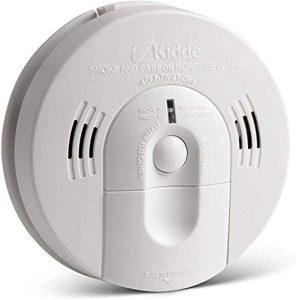Carbon Monoxide Detectors
It is the law! As of January 1, 2008, every residence is required by Illinois law to have a Carbon Monoxide detector located within 15 feet of a bedroom. Carbon monoxide is the number one cause of poisoning deaths in the nation, claiming approximately 300 lives a year. Because CO is an odorless, colorless, tasteless gas, it can kill people before they realize its presence. It is recommended that you test them each month. Replace batteries every six months.

E.D.I.T.H.
Exit Drills In The Home. A program designed to teach residents how to exit their homes in case of a fire. If the smoke alarm sounds, GET OUT AND STAY OUT. Never go back inside for people or pets.
>> MAKE a home escape plan. Draw a map of your home showing all doors and windows. Discuss the plan with everyone in your home.
>> KNOW at least two ways out of every room., if possible. Make sure all doors and windows leading outside open easily.
>> HAVE an outside meeting place like a tree, or a light pole. A safe distance from your home where everyone should meet.
>> PRACTICE your home fire drill at night and during the day with everyone in your home, at least twice a year.
>>PRACTICE using different ways out.
>> TEACH children how to escape on their own in case you can’t help them.
>>CLOSE doors behind you as you leave.
>>CALL the fire department from outside your home.
Department members are available to assist families in exit planning upon request.
Smoke Detectors
Install smoke alarms in every bedroom. They should also be outside each sleeping area and on every level of the home. Install alarms in the basement. Large homes may need extra smoke alarms.
It is best to use interconnected smoke alarms. When one smoke alarm sounds, they all sound.
Test all smoke alarms at least once a month. Press the test button to be sure the alarm is working.
There are two kinds of alarms. Ionization smoke alarms are quicker to warn about flaming fires. Photoelectric alarms are quicker to warn about smoldering fires. It is best to use both types of alarms in the home.
A smoke alarm should be on the ceiling or high on a wall. Keep smoke alarms away from the kitchen to reduce false alarms. They should be at least 10 feet (3 meters) from the stove.
People who are hard-of-hearing or deaf can use special alarms. These alarms have strobe lights and bed shakers.
Replace all smoke alarms when they are 10 years old.

Lorem ipsum dolor sit amet, consectetur adipiscing elit. Ut elit tellus, luctus nec ullamcorper mattis, pulvinar dapibus leo.
